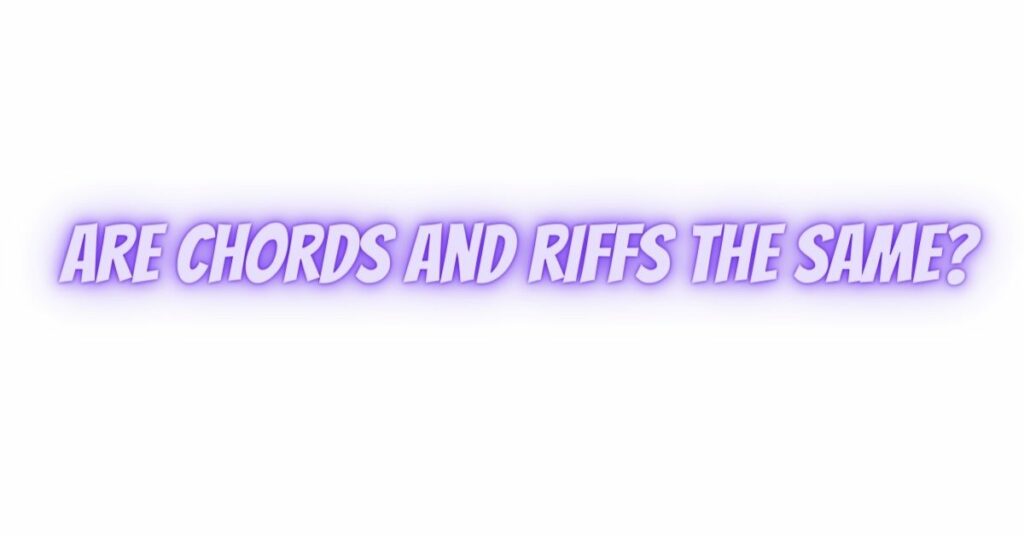Guitar music encompasses a diverse range of techniques, from strumming chords to playing melodic riffs. While both chords and riffs are essential components of guitar playing, they serve distinct functions and offer unique musical qualities. In this comprehensive guide, we will explore the differences between chords and riffs, shedding light on their characteristics, applications, and roles in creating captivating guitar music.
Chords: The Building Blocks of Harmony
Chords are fundamental elements in music, providing the harmonic foundation that underpins melodies and compositions. Here are some key characteristics of chords:
- Simultaneous Notes: Chords are formed by playing multiple notes simultaneously. These notes often include the root, third, and fifth, creating a harmony that defines the tonality of a piece.
- Harmony and Accompaniment: Chords are commonly used in rhythm guitar playing to provide harmonic support and accompaniment to the melody or lead. They establish the underlying harmony and structure of a song.
- Stability: Chords contribute to the stability of a composition. They offer a sense of resolution, especially when resolving to the tonic (root) chord, creating a feeling of completeness in a musical phrase.
- Chord Progressions: Chord progressions involve a sequence of chords played in succession, adding variety and emotional depth to a song. They are the foundation of songwriting and arrangement.
Riffs: The Melodic and Expressive Elements
Riffs are melodic and often rhythmically distinct patterns that capture the listener’s attention and add character to a song. Here are some key characteristics of riffs:
- Single-Line Melodies: Riffs are typically played as single-line melodies, featuring a series of notes that stand out from the harmony. These notes often contain distinctive intervals or rhythmic patterns.
- Emphasis and Hooks: Riffs serve as memorable and attention-grabbing elements within a song. They are often repeated and function as hooks that listeners can easily identify and recall.
- Lead and Expression: Riffs are commonly found in lead guitar parts, allowing the guitarist to express themselves through melodic creativity and virtuosic playing. They are a source of emotional and stylistic expression.
- Variation and Contrast: Riffs can provide contrast within a composition. They break away from the chordal accompaniment, offering a change in texture and energy, which can enhance a song’s dynamics.
Distinguishing Chords and Riffs:
The primary distinction between chords and riffs lies in their function and the way they contribute to a composition:
- Chords provide harmonic support and form the foundation of a song’s harmony. They are essential for establishing structure, accompaniment, and tonality.
- Riffs are melodic and lead-oriented. They offer distinctive melodies, hooks, and expressive qualities that set them apart from the harmonic accompaniment. Riffs are often showcased in solos and instrumental sections.
Collaboration in Guitar Music:
Chords and riffs frequently collaborate in guitar music, working in harmony to create rich and engaging compositions. While chords offer stability and structure, riffs inject melody, creativity, and excitement into a song. This collaborative relationship between chords and riffs showcases the diversity and versatility of the guitar as a musical instrument.
In conclusion, chords and riffs are not the same; they serve different functions and offer distinct musical qualities in guitar music. Understanding their roles and how they complement each other is essential for creating well-rounded and captivating guitar compositions.


